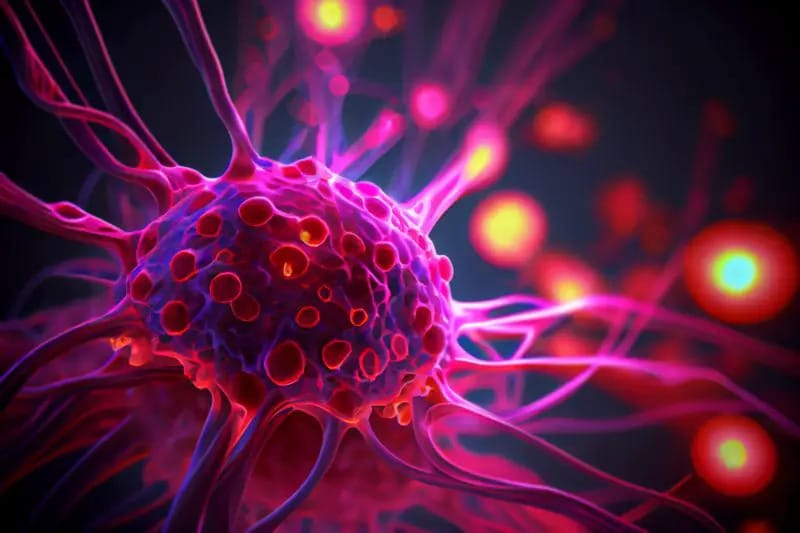In the ever-evolving realm of medical science, breakthroughs that promise to transform the healthcare landscape signify a monumental step forward to providing better and accessible solutions, especially to some illnesses like cancer that are hard to cure.
Liver cancer has long been combated with traditional methods like surgery and minimally invasive procedures ranging from intricate surgeries to cutting-edge minimally invasive procedures. While these approaches have saved countless lives, they often come with their own set of challenges, leaving room for innovation.
Promising New Liver Cancer Treatment Emerges: Killing Cancer With Sound
A recent study has reported the successful implementation of the first-in-human histotripsy treatment for liver tumors. This treatment demonstrated safety and predictability in all eight patients who participated in the THERESA Study, which was a phase 1 clinical trial conducted at three locations in Spain.
The trial enrolled patients with primary and metastatic liver tumors that couldn’t be removed through surgery, and these tumors had originated from various types of cancers. Dr. Joan Vidal-Jové, the principal investigator of the study, highlighted the positive impact on patients and the potential for histotripsy technology to work alongside immunotherapies.
The treated tumors were relatively small in size, and the trial achieved acute technical success without any adverse events related to the device, meeting both its primary and secondary safety goals. Larger histotripsy clinical trials, known as #HOPE4LIVER, are currently underway in multiple hospitals in the United States and Europe. [1]
How Does Cancer Treatment With Sound Waves Work? Understanding Histotripsy
The treatment of liver cancer using soundwaves is a groundbreaking discovery called histotripsy. It’s a noninvasive therapy capable of generating ultrasonic pulse sequences powerful enough to break down tissue but gentle enough to leave the surrounding areas unharmed.
The process of histotripsy employs an ultrasound transducer to disintegrate cancerous tumors instead of using it for internal imaging purposes. It operates on the principle of ultrasound cavitation, much like the approach employed to noninvasively break down fat cells for weight loss purposes. Ultrasound waves are narrowed down to the treatment area and the vibrations initiate tiny bubbles within the target tissues. The bursting of these bubbles disrupts those tissues, annihilating that portion of the tumor. [2]
Gaining precise access to the entire tumor proves challenging due to the positioning of these cancerous masses, influencing whether this technique is safe to use for the whole tumor.

Histotripsy in Its Infancy Stage
Histotripsy was developed in Michigan in hopes of finding a unique way to combat cancer by doing two things at once: it physically destroys tumors using sound waves and jumpstarts the body’s immune system. Their laboratory study, led by Dr. Clifford Cho and Dr. Zhen Xu at the University of Michigan, demonstrated the effectiveness of noninvasive sound waves in breaking up liver tumors in rats. [3,4]
Around 22 laboratory rats were given liver cancer. Half of them were kept as a control group, while the other half received histotripsy treatment targeting about 50 to 75% of their tumor volume.
A smaller group of 3 rats received a lower dose of treatment, focusing on only 25% of the tumor volume using histotripsy.
After the treatment, the experimental rats were euthanized and examined to see how well the treatment worked. Scientists checked for signs of tumor growth, spreading to other areas, and immune system responses.
The results for the control group rats were disappointing because they all showed signs of tumor growth and spreading. They were euthanized when their tumors reached the largest size allowed within the ethical guidelines, which was three weeks after the treatment.
Significant Milestone Highlighting Histotripsy’s Potential
On a more positive note, the rats that received treatment showed significant improvement. The treatment went smoothly without any complications or side effects. Nine out of 11 of these rats experienced a reduction in tumor size and lived without tumors for the rest of the approximately 10-week study.
Previous research had already indicated that histotripsy could reduce tumor size, but this study has seen more of its potential to increase survival rates after treatment.
The developmental journey of this study represents a significant milestone as the first successful sound wave treatment for liver cancer. The study showcased histotripsy’s remarkable potential for non-invasively disrupting tumors and preventing their growth or spread. Even with partial treatment, it achieved complete tumor shrinkage in 9 out of 11 treated rats, and there were no indications of tumor recurrence or spreading throughout the 12-week study duration, as validated by MRI and histology.
These promising outcomes strongly suggest that histotripsy may not pose an increased risk of tumor resurgence or metastasis post-treatment when compared to control groups. The researchers underscored in their paper that this success paves the way for further exploration into histotripsy’s safety, effectiveness, and biological effects, with an ultimate goal of potential application in clinical practice. [4]
A Sound Way Forward
In a world where cancer remains a daunting challenge, the innovative approach of histotripsy offers a glimmer of hope for a cancer-free future. While we’re still in the early stages of this journey, the success of the first-in-human trial is a significant milestone. It highlights histotripsy’s ability to efficiently eliminate targeted tissue volumes without any device-related complications, particularly in a small group of patients.
Considering the unique and noninvasive nature of histotripsy, it is clear that further extensive multicenter clinical trials are not only justified but also necessary to confirm and build upon these promising results. These trials will play a vital role in unlocking the full potential of histotripsy, bringing us one step closer to a world without the burden of cancer.

My Personal RX: Prioritizing Liver Health
Liver cancer is a grave concern in the medical community. From my years of clinical experience, I can attest to the aggressive nature of this disease. While advancements are being made, effective treatments for liver cancer are still in their early stages. So, emphasizing liver health becomes paramount — not just for cancer prevention but for overall vitality.
- Embrace a Balanced Diet: Prioritize foods rich in antioxidants and low in saturated fats. Healthy eating can be your first line of defense against liver diseases.
- Limit Alcohol Consumption: While occasional drinking might be safe for some, excessive alcohol can damage your liver cells, leading to inflammation and liver diseases.
- Avoid Toxins: Limit exposure to harmful chemicals and toxins. Whether it’s in your environment or in the products you use, these toxins can injure liver cells.
- Boost Your Immunity: Consider my Immune Support supplements, a blend of vital nutrients crafted to enhance your body’s immune reserves. Strengthen your immune system for overall health today.
- Get Inspired: Watch The Making of a Health Hero movie and draw motivation from real-life Health Heroes who triumphed over health challenges. Find inspiration to champion your health journey.
- Incorporate Regular Exercise: Physical activity can help maintain a healthy weight, which is crucial for liver health. Aim for at least 30 minutes a day of moderate exercise.
- Prioritize Liver Detox: Check out my specially formulated Liver Support supplements for a comprehensive approach to liver detoxification and to maintain a balanced inflammatory and antioxidant response. Support your liver holistically.
By following my tailored advice, you can take proactive steps to protect your liver from potential risks and maintain its vital functions. Remember that a healthy lifestyle, regular check-ups, and informed choices can go a long way in preserving this essential organ’s health. Your liver’s well-being is key to your overall health, so make these guidelines a part of your daily routine for a healthier, happier you.

Sources:
- Worlikar, T., Zhang, M., Ganguly, A., Hall, T. L., Shi, J., Zhao, L., Lee, F. T., Mendiratta‐Lala, M., Cho, C. S., & Xu, Z. (2022). Impact of histotripsy on development of intrahepatic metastases in a rodent liver tumor model. Cancers, 14(7), 1612. https://doi.org/10.3390/cancers14071612
- How sound waves trigger immune responses to cancer in mice. (2023, May 30). University of Michigan News. https://news.umich.edu/how-sound-waves-trigger-immune-responses-to-cancer-in-mice/
- Blank, C. (2022, May 2). Ultrasound as a treatment for liver cancer shows promise. Managed Healthcare Executive. https://www.managedhealthcareexecutive.com/view/ultrasound-as-a-treatment-for-liver-cancer-shows-promise
- Worlikar, T., Zhang, M., Ganguly, A., Hall, T. L., Shi, J., Zhao, L., Lee, F. T., Mendiratta‐Lala, M., Cho, C. S., & Xu, Z. (2022b). Impact of histotripsy on development of intrahepatic metastases in a rodent liver tumor model. Cancers, 14(7), 1612. https://doi.org/10.3390/cancers14071612












 Subscribe to Ask Dr. Nandi YouTube Channel
Subscribe to Ask Dr. Nandi YouTube Channel










